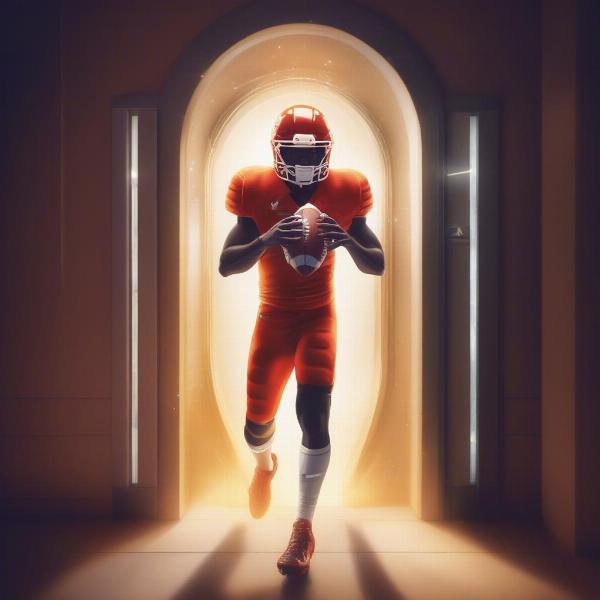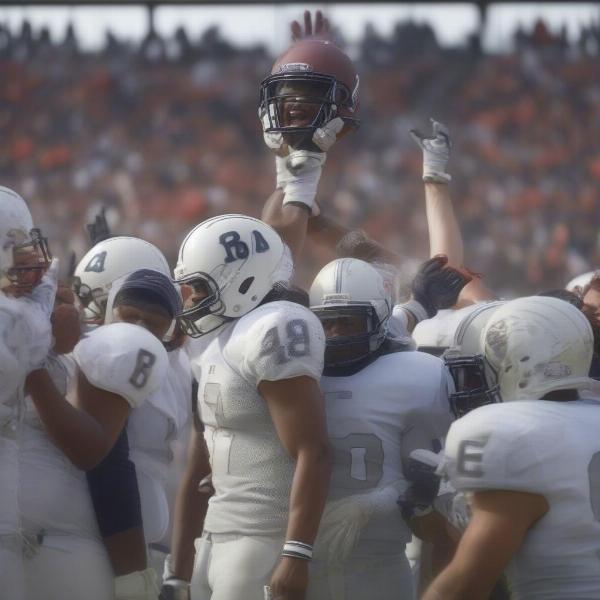The question of whether transfer players can participate in bowl games is a common one among college football fans, and here at supremeduelist.blog, we aim to provide you with clear answers. The rules surrounding transfer eligibility can be complex and vary depending on certain situations. This article will delve into the NCAA regulations, outlining the specific circumstances that determine whether a transferred athlete is eligible for postseason play.
Navigating the intricate landscape of NCAA transfer rules can be confusing, particularly when bowl season approaches. This post will break down these rules, exploring topics such as the one-time transfer exception, the concept of immediate eligibility, and the impact of the transfer portal on bowl game participation. Our goal is to give you a comprehensive guide to understanding the factors influencing a player’s ability to compete in college football bowl games after transferring.
Understanding NCAA Transfer Rules: A Foundation
The National Collegiate Athletic Association (NCAA) has specific guidelines governing when a transfer student-athlete can compete for their new team. Generally, before recent rule changes, student-athletes who transferred to a new school had to sit out for a year before being eligible to play. This “year in residency” was designed to discourage frequent transfers and maintain a level of competitive balance.
 college football transfer portal
college football transfer portal
However, the introduction of the NCAA transfer portal and the “one-time transfer exception” significantly altered these dynamics.
The One-Time Transfer Exception
The one-time transfer exception, a crucial aspect of modern college athletics, allows student-athletes in most sports, including football, to transfer to another Division I institution once without having to sit out a year. This means that, if they meet specific academic criteria and have a clean disciplinary record, they are immediately eligible to compete for their new team. There are some caveats. Not all transfers will qualify for immediate eligibility.
Here are a few conditions that generally must be met to qualify for the one-time transfer exception:
- The student-athlete must be academically eligible at both their previous and new institution
- The student-athlete must be in good standing at their previous school
- The transfer must occur within the appropriate timeline to be eligible for immediate play
- The student-athlete must have not transferred previously using the one-time transfer exception.
Immediate Eligibility and Bowl Games
For a transfer player to participate in a bowl game, they must achieve immediate eligibility under the guidelines of the NCAA one-time transfer exception. It’s important to note that even if they’ve gained eligibility to play in the regular season, that same eligibility extends to postseason play, meaning they are usually allowed to compete in bowl games.
Why might a transfer player not be eligible for a bowl game? This question usually arises when transfers occur close to the bowl season. If a player transfers mid-season, it’s possible they might not meet all academic and regulatory deadlines set by their new university and the NCAA to participate in the bowl season. Also, a transfer player who has already used their one time exemption will need to receive a waiver from the NCAA to be eligible immediately.
What is the transfer portal? The transfer portal is a database where student-athletes announce their intention to transfer. It’s a tool used by universities and athletes, and it has become a vital part of the transfer process.
Bowl Game Eligibility: Factors Influencing Play
Several factors can influence whether a transfer player can participate in a bowl game. These include:
- Timing of the Transfer: If a player transfers during the summer, before the football season starts, they typically have no issues with eligibility provided they fulfill the other requirements. However, if a transfer occurs closer to the end of the season or during the season itself, eligibility can become more complicated.
- Academic Status: Student-athletes must remain in good academic standing at both the school they’re leaving and their new institution. Academic shortcomings could lead to ineligibility.
- NCAA Waivers: There are some cases where an athlete has to apply for a waiver from the NCAA to participate immediately. These cases usually involve second or third time transfers, or unusual circumstances that mean the first-time exemption does not apply.
- Institutional Deadlines: Universities have internal deadlines related to player registration and academic certifications which will have an impact. Transfer players must meet these internal deadlines to be eligible for game participation.
“The key to a transfer player’s bowl game eligibility lies in fulfilling the NCAA’s guidelines for immediate eligibility and meeting university deadlines. It’s not simply about transferring; it’s about completing the process correctly.” – Dr. Emily Carter, Sports Law Expert
How Does the Transfer Portal Affect Bowl Game Participation?
The transfer portal has fundamentally changed college athletics by facilitating easier player movement. While it provides opportunities for athletes to find the best fit for them, it also introduces complexities concerning eligibility.
The transfer portal, per se, does not grant a player automatic bowl game participation. Rather, it simplifies the transfer process. Players still have to comply with all the normal NCAA rules regarding eligibility to be able to participate. This includes maintaining academic eligibility and fulfilling all necessary regulatory requirements and institutional rules to be eligible to play in a bowl game.
Key Points About the Transfer Portal
- Announcing Intent: The transfer portal allows student-athletes to publicly indicate their intent to transfer.
- Recruiting: Once a player enters the portal, it signals to other institutions that they are available for recruitment.
- Compliance: Both the departing and receiving institutions must adhere to NCAA guidelines and rules governing transfer protocols.
 football player celebrating bowl game
football player celebrating bowl game
FAQs on Transfer Players and Bowl Game Eligibility
Here are some frequently asked questions that may help with your understanding of transfer eligibility:
- Can a player who transfers mid-season play in the bowl game?
- Yes, but they would need to fulfil all requirements for immediate eligibility as noted above. It often depends on the specific date of transfer and the deadlines at their new university.
- Do all transfers get immediate eligibility?
- No. Usually, the one-time transfer exception will allow this eligibility if all the criteria are met, but this exception is not unlimited.
- If a player is ineligible for a bowl game after transferring, can they play next season?
- Yes. Most ineligibility that applies to bowl games only is a result of deadlines and procedures, not about overall academic standards. If there is no larger issue regarding eligibility, they should be able to play next season.
- What happens if a transfer has multiple suspensions from their previous school?
- Multiple violations may have a negative impact on their chance to qualify for the one time waiver, even if it was not for the previous transfer. This is not guaranteed, and it depends on the nature of the violations.
- How do I check the specific eligibility rules for my sport?
- Consult the NCAA’s official website and your university’s athletic department. Each sport may have specific nuances.
- Does a player using the transfer portal need to sit out games?
- No. Players who qualify for the one-time waiver exemption usually do not need to sit out games.
- What is a “walk on” in college football?
- A “walk on” is an athlete who is part of the team, but not on a full scholarship.
“The complexity surrounding transfer rules makes understanding the eligibility landscape vital for any football fan. While rules are designed to be consistent, circumstances can vary, leading to different outcomes for individual players.” – Johnathan Reed, NCAA Rule Analyst
Conclusion: Navigating the Transfer Landscape
Understanding whether transfer players can participate in bowl games involves navigating complex NCAA regulations, understanding the transfer portal’s impact, and being aware of the various eligibility factors. The rules are in place to promote fairness and ensure that student-athletes maintain academic integrity, and they are constantly evolving. This analysis shows it is not simply a question of whether a player transfers but when, how and if they fulfill the necessary criteria.
At supremeduelist.blog, we strive to keep our community informed with detailed and accurate analysis. For any questions about college sports or other gaming topics, stay tuned to our blog for more insightful coverage. Remember, the transfer landscape in college sports is dynamic, and it’s essential to stay up-to-date on the latest developments to remain informed. We invite you to follow our content for the latest information.
Leave a Reply